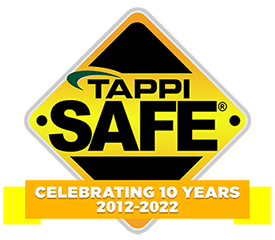 Search
Search
Use the search bar or filters below to find any TAPPI product or publication.
Filters
Content Type
Publications
Level of Knowledge
Collections
Magazine articles

Alkaline peroxide mechanical pulping of hardwoods, TAPPI JOURNAL, June 1991, Vol. 74(6)
Alkaline peroxide mechanical pulping of hardwoods, TAPPI JOURNAL, June 1991, Vol. 74(6)
Magazine articles

The behavior-based approach to safety: a clear picture, an effective plan, TAPPI JOURNAL, August 1991, Vol. 74(8)
The behavior-based approach to safety: a clear picture, an effective plan, TAPPI JOURNAL, August 1991, Vol. 74(8)
Journal articles

Magazine articles

Tetraethyl orthosilicate-containing dispersion coating — water vapor and liquid water barrier properties, TAPPI Journal September 2021
ABSTRACT: An aqueous styrene-butadiene latex dispersion coating containing in-situ processed tetraethyl orthosilicate (TEOS) applied on paperboard demonstrated improved water barrier performance. Coatings containing TEOS equivalent to 0.8% silicon dioxide (SiO2; dry basis) exhibited water vapor performance of < 25 g/m2/day (23°C, 50% relative humidity [RH]) and liquid water barrier performance Cobb 1800 s of < 6 g/m2, when applied as a single-layer 18 g/m2 coating. Cobb 1800 s barrier performance was still good (< 11 g/m2) at coat weights of 7•10 g/m2. The use of filler materials such as kaolin improved the vapor barrier properties of the coating, but this was not critical to the liquid water barrier properties.
Journal articles

Magazine articles

Application of ATR-IR measurements to predict the deinking efficiency of UV-cured inks, TAPPI Journal January 2022
ABSTRACT: In recent years, ultraviolet (UV)-curable ink has been developed and widely used in various printing applications. However, using UV-printed products (UV prints) in recovered paper recycling causes end-product dirt specks and quality issues. A new method was developed that can distinguish UV prints from other prints by means of attenuated total reflectance infrared (ATR-IR) spectroscopy. Application of this method could allow more efficient use of UV prints as raw materials for paper recycling.First, a mill trial was performed using UV prints alone as raw materials in a deinked pulp (DIP) process. Second, test prints were made with four types of UV inks: a conventional UV ink and three different highly-sensitive UV inks. Each print sample had four levels of four-color ink coverage patterns (100%, 75%, 50%, and 25%). Next, deinkability of all prints was evaluated by laboratory experiments. Finally, each print was measured using the ATR-IR method, and the relationship between the IR spectra and deinkability was investigated. Mill trial results showed that UV prints caused more than 20 times as many dirt specks as those printed with conventional oil-based ink. There were variations in recycling performance among UV prints taken from bales used for the mill trial. Lab tests clearly revealed that not all UV-printed products lead to dirt specks. In order to clarify the factors that affected deinkability of UV prints, the print samples were investigated by lab experiments. Key findings from lab experiments include: œ The number of dirt specks larger than 250 µm in diameter increased as the ink coverage increased. œ Higher ink coverage area showed stronger intensity of ATR-IR spectral bands associated with inks. These results indicate that deinkability of UV prints could be predicted by analysis of ATR-IR spectra. œ Finally, the method was applied for assessment of recovered paper from commercial printing presses. It was confirmed that this method made it possible to distinguish easily deinkable UV prints from other UV prints. Based on these findings, we concluded that the ATR-IR method is applicable for inspection of incoming recovered paper.
Journal articles

Magazine articles

Web lateral instability caused by nonuniform paper properties, TAPPI Journal January 2022
ABSTRACT: Lateral or cross-machine direction (CD) web movement in printing or converting can cause problems such as misregistration, wrinkles, breaks, and folder issues. The role of paper properties in this problem was studied by measuring lateral web positions on commercial printing presses and on a pilot-scale roll testing facility (RTF). The findings clearly showed that CD profiles of machine direction (MD) tension were a key factor in web stability. Uneven tension profiles cause the web to move towards the low-tension side. Although extremely nonuniform tension profiles are visible as bagginess, more often, tension profiles must be detected by precision devices such as the RTF. Once detected, the profiles may be analyzed to determine the cause of web offset and weaving problems.Causes of tension profiles can originate from nonuniform paper properties. For example, by means of case studies, we show that an uneven moisture profile entering the dryer section can lead to a nonuniform tension profile and lateral web movement. Time-varying changes in basis weight or stiffness may also lead to oscillations in the web’s lateral position. These problems were corrected by identifying the root cause and making appropriate changes. In addition, we developed a mathematical model of lateral stability that explains the underlying mechanisms and can be used to understand and correct causes of lateral web instability.
Journal articles

Magazine articles

Effects of carboxymethyl starch as a papermaking additive, TAPPI Journal February 2024
ABSTRACT: Carboxymethyl starch (CMS) is a bio-based, anionic polymer that has potential as part of a dry-strength additive program for papermaking. Due to its negative charge, its effects can be expected to depend on its interactions with various cationic agents. In this work, the effects of CMS were observed following its sequential addition after one of three selected cationic strength agents at different dosage levels. In selected tests, the furnish was pretreated at the 1% level by a dispersant, sodium polyacrylate, which might represent a high level of anionic contaminants in a paper mill system. Laboratory tests were conducted to show the effects on dewatering, fine-particle retention, and flocculation. These tests were supplemented with measurements of charge demand, zeta potential, and handsheet properties. Sequential addition of cationic glyoxylated acrylamide copolymers (gPAM) and CMS were found to strongly promote dewatering. Two gPAM products and a poly(vinylamine) product in sequential addition with CMS were very effective for promoting fine-particle retention. These same sequential treatments of the stock contributed to moderate fiber flocculation, though severe flocculation was caused by further treatment of the furnish with colloidal silica. Handsheet strength results were mixed. In the default recycled copy paper furnish, the average breaking length for the sheets made with cationic additives followed by CMS was not greatly different from the blank condition. Superior strength resulted when the default furnish was treated with a dispersant alone. When the dispersant-contaminated furnish was treated with the same combinations of cationic additives and CMS, the strength returned to the baseline achieved in the absence of the dispersant. The results were discussed in terms of the charged character of the different additives and their interactions not only with the fiber surfaces but also with each other.
Journal articles

Magazine articles

Dynamic out-of-plane compression of paperboard — Influence of impact velocity on the surface, TAPPI Journal February 2024
ABSTRACT: Processes that convert paperboard into finished products include, for example, printing, where the paperboard is subjected to rapid Z-directional (ZD) compression in the print nip. However, measuring and evaluating the relevant properties in the thickness direction of paperboard are not necessarily straightforward or easy. Measuring at relevant, millisecond deformation rates further complicates the problem. The aim of the present work is to elucidate some of the influences on the compressive stiffness. Both the initial material response and the overall compressibility of the paperboard is studied. In this project, the effect on the material response from the surface structure and the millisecond timescale recovery is explored.The method utilized is a machine called the Rapid ZD-tester. The device drops a probe in freefall on the substrate and records the probe position, thus acquiring the deformation of the substrate. The probe is also allowed to bounce several times on the surface for consecutive impacts before being lifted for the next drop. To investigate the time dependent stiffness behavior, the probe is dropped several times at the same XY position on the paperboard from different heights, thus achieving different impact velocities. The material response from drops and bounces combined allows study of the short-term recovery of the material. The material in the study is commercial paperboard. The paperboard samples are compared to material where the surface has been smoothed by grinding it. Our study shows that there is a non-permanent reduction in thickness and a stiffening per bounce of the probe, indicating a compaction that has not recovered in the millisecond timescale. Additionally, a higher impact velocity has an initial stiffening effect on the paperboard, and this is reduced by smoothing the surface.
Journal articles

Magazine articles

Predicting strength characteristics of paper in real time using process parameters, TAPPI Journal March 2022
ABSTRACT: Online paper strength testing methods are currently unavailable, and papermakers have to wait for manufacture of a complete reel to assess quality. The current methodology is to test a very small sample of data (less than 0.005%) of the reel to confirm that the paper meets the specifications. This paper attempts to predict paper properties on a running paper machine so that papermakers can see the test values predicted in real time while changing various process parameters. This study was conducted at a recycled containerboard mill in Chicago using the multivariate analysis method. The program provided by Braincube was used to identify all parameters that affect strength characteristics. Nearly 1600 parameters were analyzed using a regression model to identify the major parameters that can help to predict sheet strength characteristics. The coefficients from the regression model were used with real-time data to predict sheet strength characteristics. Comparing the prediction with test results showed good correlation (95% in some cases). The process parameters identified related well to the papermaking process, thereby validating the model. If this method is used, it may be possible to predict various elastic moduli (E11, E12, E22, etc.) in the future as the next step, rather than the traditional single number “strength” tests used in the containerboard industry, such as ring crush test (RCT), corrugating medium test (CMT), and short-span compression strength test.
Journal articles

Magazine articles

Effects of phosphogypsum whiskers modification with calcium stearate and their impacts on properties of bleached softwood paper sheets, TAPPI Journal September 2021
ABSTRACT: By combining the structural properties and characteristics of phosphogypsum whiskers, a preliminary study on the modification of phosphogypsum whiskers and their application in papermaking was carried out. The effects of reaction temperature, reaction time, and reaction concentration on the solubility and retention of modified phosphogypsum whiskers and the effects of phosphogypsum whiskers on the physical properties of paper under different modified conditions were explored. The research results show that, after the phosphogypsum whiskers are modified with calcium stearate, a coating layer will be formed on the surface of the whiskers, which effectively reduces the solubility of the phosphogypsum whiskers. The best modification conditions are: the amount of calcium stearate relative to the absolute dry mass of the phosphogypsum whisker is 2.00%; the modification time is 30 min, and the modification temperature is 60°C. The use of modified phosphogypsum whiskers for paper filling will slightly reduce the whiteness, folding resistance, burst resistance, and tensile strength of the paper, but the tearing degree and retention of the filler will be increased to some extent.
Journal articles

Magazine articles

The effect of contact time between CPAM and colloidal silica on the flocculation behavior in the approach flow, TAPPI Journal January 2021
ABSTRACT: Multicomponent wet-end systems have become increasingly common in papermaking, with the objective of improving the retention-formation-dewatering relationship. It is quite common to use at least a cationic polymer, often in combination with an anionic microparticle. In some cases, a fixative is also used. However, there is still debate on the optimal implementation of these systems. In particular, optimizing the contact time of the cationic polymer prior to addition of the anionic microparticle is still poorly understood. In this work, we investigate the effect of the contact time of a cationic polyacrylamide (CPAM) prior to addition of colloidal silica on the flocculation response in a flowing fiber suspension. The effect of using a fixative is also investigated. Focused beam reflectance measurements (FBRM) are combined with zeta-potential measurements for optimizing the addition levels of a two- and three-component system, as well as for elucidating the effect of contact time on CPAM performance. Trials are then performed on a pilot scale flow loop, where the time between addition of these two components is varied and the resulting flocculation response is characterized using high-speed filming and image analysis techniques. It is shown that the efficacy of CPAM can be improved through use of a fixative and that a longer CPAM contact time may be beneficial in terms of immediate flocculation; however, hydrodynamic shear tends to dominate the flocculation response regardless of contact time due to floc rupture.






